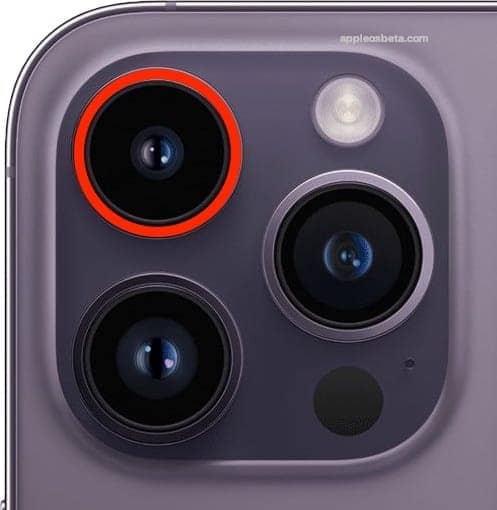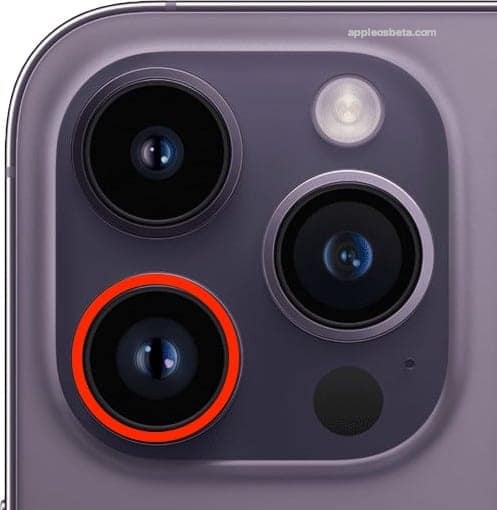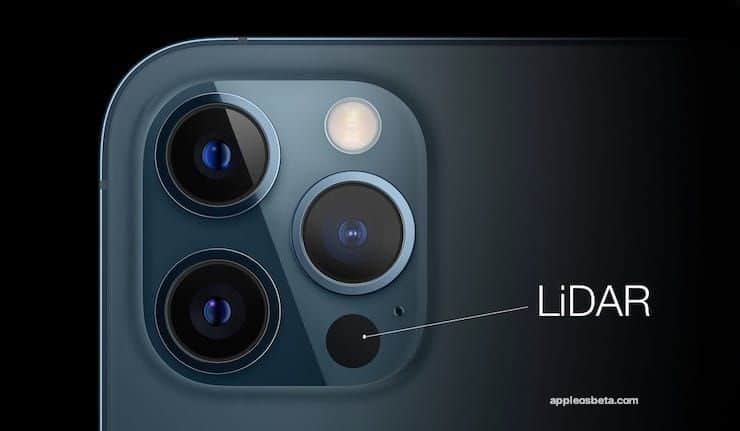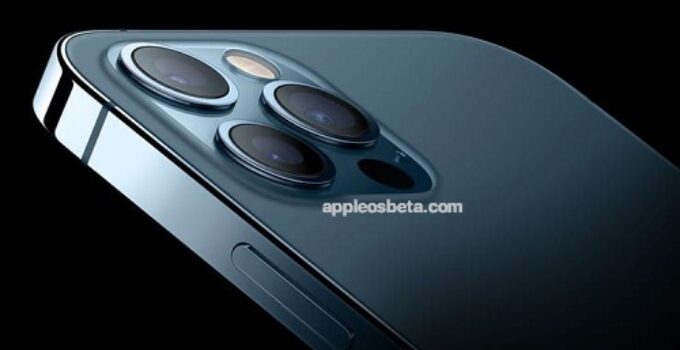Why does iPhone have 3 cameras: what is each one for and how to switch? Unnoticed, the mobile phone has received so many functions that it has now become our indispensable assistant in a wide variety of areas of life. And no one is surprised that more and more people prefer to take photos on a smartphone, and not on a sophisticated and high-quality camera. Moreover, manufacturers have already installed several camera modules in phones.
How to Enable the Recent from iCloud Drive Smart Folder on Mac?
The average consumer sees this as proof of progress – two cameras are better than one, and three are better than two. And only skeptics quite reasonably ask the question: is there any point in these modules? The question sounds quite reasonable. Experts say that a modern smartphone needs to have several cameras for high-quality shooting. We will tell you why this is so.
The problem is lack of space
It’s no secret that everyone wants to see their smartphone as thin as possible. Who is interested in “bricks” with a thickness of more than a centimeter? But marketing requirements are the real pain for designers. After all, it is necessary to place bulky components, including the camera lens, in a limited space. It cannot by its very nature be compact. It consists of glass lenses of different sizes, which still need to move to collect light, increase the object (the same zoom) and the stabilization system. At one time, engineers even went on a bold experiment by creating the Samsung Galaxy K Zoom.
But the hybrid of a camera and a smartphone frankly failed. It is difficult to call a gadget in which the lens was glass and of really high quality mobile. Ideas about choosing a different material for lenses failed – nothing refracts light better than glass. But engineers have found a way out of the technological impasse.
An additional camera is the solution to the problem!
Now this idea seems simple and ingenious. If it is physically impossible to create one large lens with several lenses in the phone, then why not put several lenses in the device, each with one lens? An interesting decision was the choice of a different focal length. As a result, one camera will be able to take wide-angle shots, and the second, for example, will act as a telephoto lens, that is, it will look at the world narrowly, but it will bring things closer.
Both cameras simultaneously shoot the same thing, and then in the course of post-processing, software overlay frames are performed. It sounds quite complicated, but the programmers have implemented this algorithm. And it turned out to be much easier to improve it than to increase the physical size of the lens. This solution allows you to collect twice as much light, get a couple of shots with different depth of field, and also make both dark and light details clear.
It was this approach that led to the appearance of second cameras in smartphones. LG and Huawei were the first to decide on this, and Apple finally made the technology popular.
Two cameras are good, but three are better?
Today you can find smartphones with three or more cameras. In fact, most often these modules are not cameras. Sometimes this is really an additional module with its own focal length. For example, the Light L16 phone received 16 cameras in general. But most often such a “camera” is a marketing ploy.
Often, in addition to the camera itself, manufacturers also place special sensors that only help improve the image.
Below are the most common options for the purpose of additional cameras in smartphones:
- Telephoto lens – the lens also received a narrow field of view to bring objects closer.
- A wide-angle (super-wide) lens is another lens for taking wide-angle shots.
- Black and white sensor – allows you to capture very sharp photos, with deep shadows and bright highlights.
- Night Vision Sensor – Enables you to capture clear images in low-light conditions and in the dark.
- Depth analysis sensor – with its help, a pair of main lenses take a photo with the correct depth of field.
Thanks to additional lenses, smartphones have been able to shoot even better, taking bright and clear photos, all while maintaining the physical size of the device. So do not recklessly consider the second and subsequent camera modules as a marketing option, the number can affect the quality. It is likely that the smartphones of the future will be densely covered with lenses. In any case, the first signs are already there – smartphones with five cameras, like the Huawei Mate 40 Pro Plus, look unusual, but do not seem like products for geeks at all.
Three (or four?) cameras in the iPhone 12 Pro
For Apple, the first smartphone with three camera modules was the iPhone 11 Pro, which appeared in 2019. The company did not rush and was able to prove that such a technological solution is indeed effective. However, already in the iPhone 12 Pro, in addition to the three cameras, a scanner called LiDAR appeared. Let’s analyze what each module is needed for using the iPhone 14 Pro / 14 Pro Max cameras as an example.
Wide-angle camera in iPhone
48MP wide-angle lens with 24mm focal length and f/1.78 aperture. This lens is considered the main camera of the iPhone.

Often used in interior photography, allowing shooting in tight spaces, as well as when shooting architecture and landscapes. Typically, the viewing angle is about 80 degrees. The better the lens aperture (aperture), which is denoted as f / 1.78, for example, (the smaller, the better), the more light will hit the camera matrix. Thereby improving the quality of shooting in low light conditions (in the dark).
To activate the wide angle camera, use the 1× button on the iPhone camera.
Ultra wide camera on iPhone

12MP ultra wide-angle lens with 13mm focal length and f/2.2 aperture. The smaller the focus, the wider the viewing angle. The second camera just allows for a 120-degree view. This lens allows you to capture as much space as possible, great for shooting landscapes. It often happens that you want to convey everything that is around. And the capabilities of a conventional camera are no longer enough here. A photo taken at ultra-wide literally pulls you inside.
In addition, on the iPhone 14 Pro and 14 Pro Max, this lens can double as a telephoto lens (48mm, f/1.78).
To activate the ultra wide camera, use the 0.5× button on the iPhone camera.
Telephoto camera in iPhone

12MP telephoto lens with 77mm focal length and f/2.8 aperture. Used to capture details, take pictures with optical zoom, and take portraits.
To activate the telephoto camera, use the 2× button on the iPhone camera.
iPhone LiDAR Scanner
LiDAR stands for Light Detection and Ranging. This technology is actively used in geodesy, cartography, where the light emitter is a laser.

The principle of operation of LiDAR is quite simple – the emitter emits light waves, and the receiver receives the reflected signal returned from the body, while taking into account the effect of the scattering medium. Based on the response time, you can determine the distance to the object.
LiDAR on the iPhone is used to capture the most natural portraits with natural bokeh. LiDAR helps the hair, ears and other parts of the human or animal body stay in focus.
How to switch between cameras on iPhone?
As mentioned above, you can use the buttons and the scale with the magnification value to switch between cameras.
- To switch to the iPhone’s ultra-wide camera, press the 0.5× button.
- To switch to the iPhone’s wide-angle camera, press the 1× button.
- To switch to the iPhone’s telephoto camera, press the 2× button.
- To fine-tune the magnification (zoom out), press and hold any of the three 0.5×, 1×, or 2× buttons until the bar appears.
Rotate the dial to the correct focal length in mm for each iPhone camera (see above).



